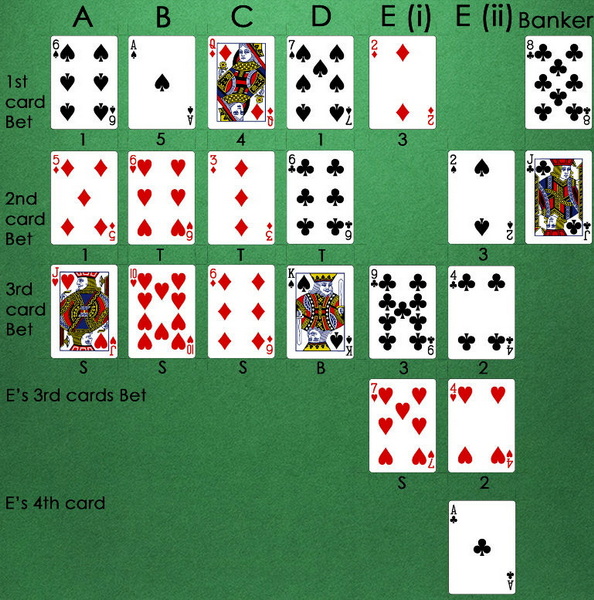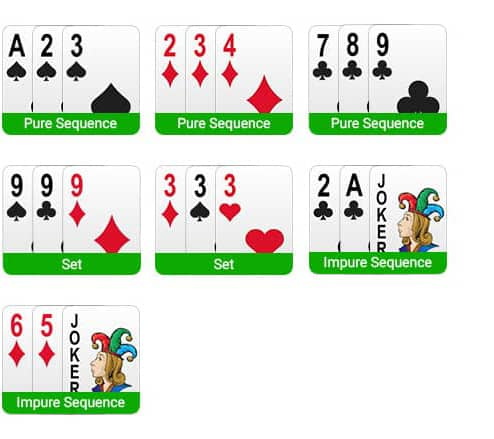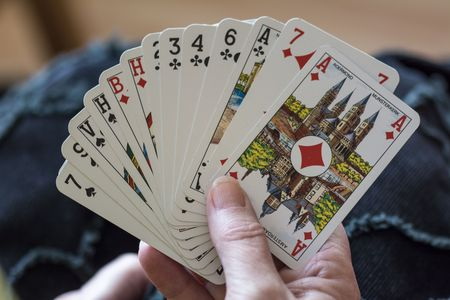Content Menu
● Understanding the Basics of 21 (Blackjack)
>> Card Values
● Setting Up the Game
● Gameplay Mechanics
>> Hit
>> Stand
>> Double Down
>> Split
>> Surrender
● Dealer's Turn
● Winning Conditions
● Basic Strategy for Playing 21
● Advanced Strategies
>> Card Counting
>> Shuffle Tracking
>> Bankroll Management Techniques
● Common Mistakes to Avoid
● Variations of Blackjack
● Conclusion
● Frequently Asked Questions
>> 1. What is the best strategy for beginners in Blackjack?
>> 2. Can I play Blackjack online?
>> 3. What happens if both I and the dealer get Blackjacks?
>> 4. Is card counting illegal?
>> 5. How do I manage my bankroll effectively while playing?
● Citations:
The card game known as "21," more commonly referred to as Blackjack, is a staple in casinos worldwide. Its appeal lies in its blend of chance and strategy, making it accessible to beginners while also offering depth for seasoned players. This guide will cover everything you need to know about playing 21, from the basic rules and strategies to advanced techniques that can enhance your gameplay.

Understanding the Basics of 21 (Blackjack)
The objective of 21 is straightforward: players aim to accumulate a hand value as close to 21 as possible without exceeding it. The game is typically played with one or more standard decks of 52 cards, and each player competes against the dealer rather than against each other.
Card Values
- Aces can be worth either 1 or 11 points, depending on which value benefits the player's hand more.
- Number cards (2 through 10) are worth their face value.
- Face cards (Kings, Queens, and Jacks) are each worth 10 points.
Setting Up the Game
To begin a game of 21, follow these steps:
1. Place Your Bet: Each player places their bet in the designated betting area.
2. Shuffle and Deal: The dealer shuffles the deck(s) and deals two cards to each player and two cards to themselves. Players' cards are usually dealt face up, while the dealer has one card face up (the "upcard") and one card face down (the "hole card").
3. Initial Assessment: Players evaluate their hands, aiming for a total as close to 21 as possible.
Gameplay Mechanics
Once the initial cards are dealt, players take turns making decisions based on their hand value and the dealer's upcard. Here are the main actions players can take:
Hit
- To "hit" means to request an additional card from the dealer.
- Players can continue hitting until they choose to stop or exceed a total of 21 (which results in a bust).
Stand
- To "stand" means to keep your current hand without taking any more cards.
- Players typically stand when they feel confident that their hand is strong enough.
Double Down
- Players may double their original bet after receiving their first two cards.
- After doubling down, players receive one additional card only.
Split
- If a player is dealt two cards of the same value, they can split them into two separate hands.
- This requires placing an additional bet equal to the original wager.
Surrender
- In some variations of Blackjack, players have the option to surrender after receiving their first two cards.
- This allows them to forfeit half their bet and end their participation in that hand.

Dealer's Turn
After all players have completed their turns, the dealer reveals their hole card. The dealer must follow specific rules regarding hitting and standing:
- The dealer must hit until they reach a total of at least 17.
- If the dealer has an Ace showing, they may count it as either 1 or 11 based on what benefits them most.
Winning Conditions
Players win if:
- Their hand total is closer to 21 than the dealer's without going over.
- The dealer busts (exceeds 21).
If both player and dealer have the same total, it's considered a push, and no bets are paid out or collected.
Basic Strategy for Playing 21
To improve your chances of winning at Blackjack, understanding basic strategy is crucial. Here are some fundamental strategies:
1. Stand on Hard Totals: If your hand totals between 12 and 16 and the dealer shows a weak upcard (2 through 6), it's generally advisable to stand. Conversely, if facing a strong upcard (7 through Ace), you should hit.
2. Always Split Aces and Eights: Splitting these pairs gives you a better chance at achieving strong hands.
3. Double Down on Strong Hands: Always double down when your total is 11; do so with a total of 10 unless the dealer shows a ten or Ace.
4. Avoid Insurance Bets: Insurance bets tend to have a high house edge and should generally be avoided unless you're counting cards.
5. Manage Your Bankroll: Set limits on how much you're willing to bet and stick to those limits regardless of wins or losses.
Advanced Strategies
Once you're comfortable with basic strategy, consider these advanced techniques:
Card Counting
Card counting involves keeping track of high and low-value cards that have been dealt to estimate the likelihood of favorable cards remaining in the deck. While this technique requires practice and concentration, it can significantly improve your odds against the house.
Shuffle Tracking
This technique involves tracking groups of cards during shuffling processes to predict where high-value cards will land in future hands. Shuffle tracking can be complex but offers another layer of strategy for experienced players.
Bankroll Management Techniques
Effective bankroll management is crucial for long-term success in Blackjack:
- Set a budget before playing.
- Use a consistent betting strategy (e.g., flat betting or percentage betting).
- Avoid chasing losses by increasing bets after losing streaks.
Common Mistakes to Avoid
To maximize your chances of success at Blackjack, avoid these common pitfalls:
- Playing Emotionally: Decisions based on emotions rather than strategy can lead to poor outcomes.
- Ignoring Basic Strategy: Failing to use basic strategy charts can significantly decrease your odds against the house.
- Over-betting: Betting more than you can afford increases risk without improving your chances of winning.
Variations of Blackjack
While traditional Blackjack is widely played, several variations exist that introduce unique rules or strategies:
1. European Blackjack: Played with two decks; dealers do not check for Blackjack until all players have completed their turns.
2. Spanish 21: Played with Spanish decks (no tens); offers different payout structures and rules like late surrender.
3. Blackjack Switch: Players are dealt two hands and may switch cards between them after both hands are completed.
4. Progressive Blackjack: Features side bets for large payouts based on specific hands like getting multiple Blackjacks in a row.
5. Live Dealer Blackjack: An online variant where players interact with real dealers via video stream while playing from home.
Conclusion
Playing 21 (Blackjack) combines skill, strategy, and luck. By understanding the rules thoroughly and employing effective strategies, you can enhance your gaming experience and increase your chances of winning against the dealer. Remember always to play responsibly and enjoy the thrill that comes with this classic card game!

Frequently Asked Questions
1. What is the best strategy for beginners in Blackjack?
- Beginners should focus on learning basic strategies such as when to hit or stand based on their hand value compared to the dealer's upcard.
2. Can I play Blackjack online?
- Yes, many online casinos offer virtual versions of Blackjack where you can play against computer-generated dealers or live dealers via video streaming.
3. What happens if both I and the dealer get Blackjacks?
- If both you and the dealer have Blackjacks, it results in a push; neither side wins or loses money on that round.
4. Is card counting illegal?
- While card counting is not illegal, casinos may ban players who are suspected of using this technique as it gives players an unfair advantage.
5. How do I manage my bankroll effectively while playing?
- Set strict limits on how much you are willing to spend per session; avoid increasing bets after losses; use consistent betting strategies throughout your playtime.
Citations:
[1] https://www.instructables.com/How-to-Play-21Blackjack/
[2] https://bicyclecards.com/how-to-play/blackjack
[3] https://www.winstar.com/blog/mastering-blackjack-essential-tips-for-dominating-the-table/
[4] https://www.venetianlasvegas.com/resort/casino/table-games/how-to-play-blackjack.html
[5] https://www.hollywoodpnrc.com/-/media/png/east/hollywood-pnrc/pdfs/table-games-tutorials/tutorial-blackjack.pdf
[6] https://www.casinolifemagazine.com/blog/mastering-art-21-strategies-variants-and-winning-tips
[7] https://www.hippodromecasino.com/hippodrome-casino/blackjack/
[8] https://www.blackjackapprenticeship.com/blackjack-strategy-charts/
[9] https://www.reddit.com/r/NoStupidQuestions/comments/1bni194/how_do_you_play_the_card_game_blackjack/
[10] https://www.businessinsider.com/what-you-need-to-know-before-going-broke-at-the-blackjack-table-2012-3
































